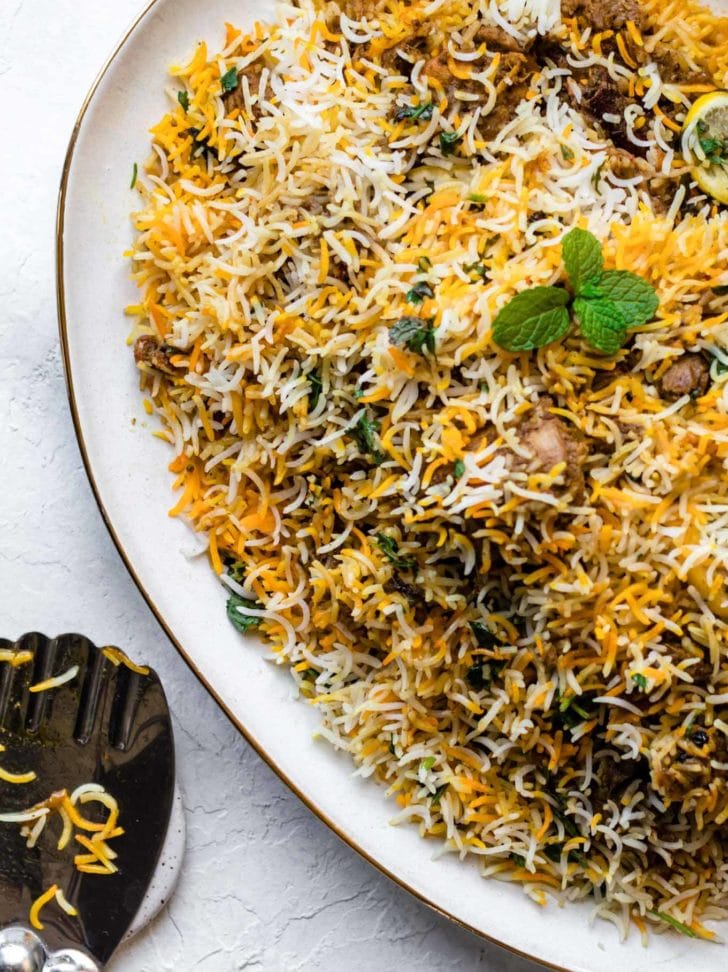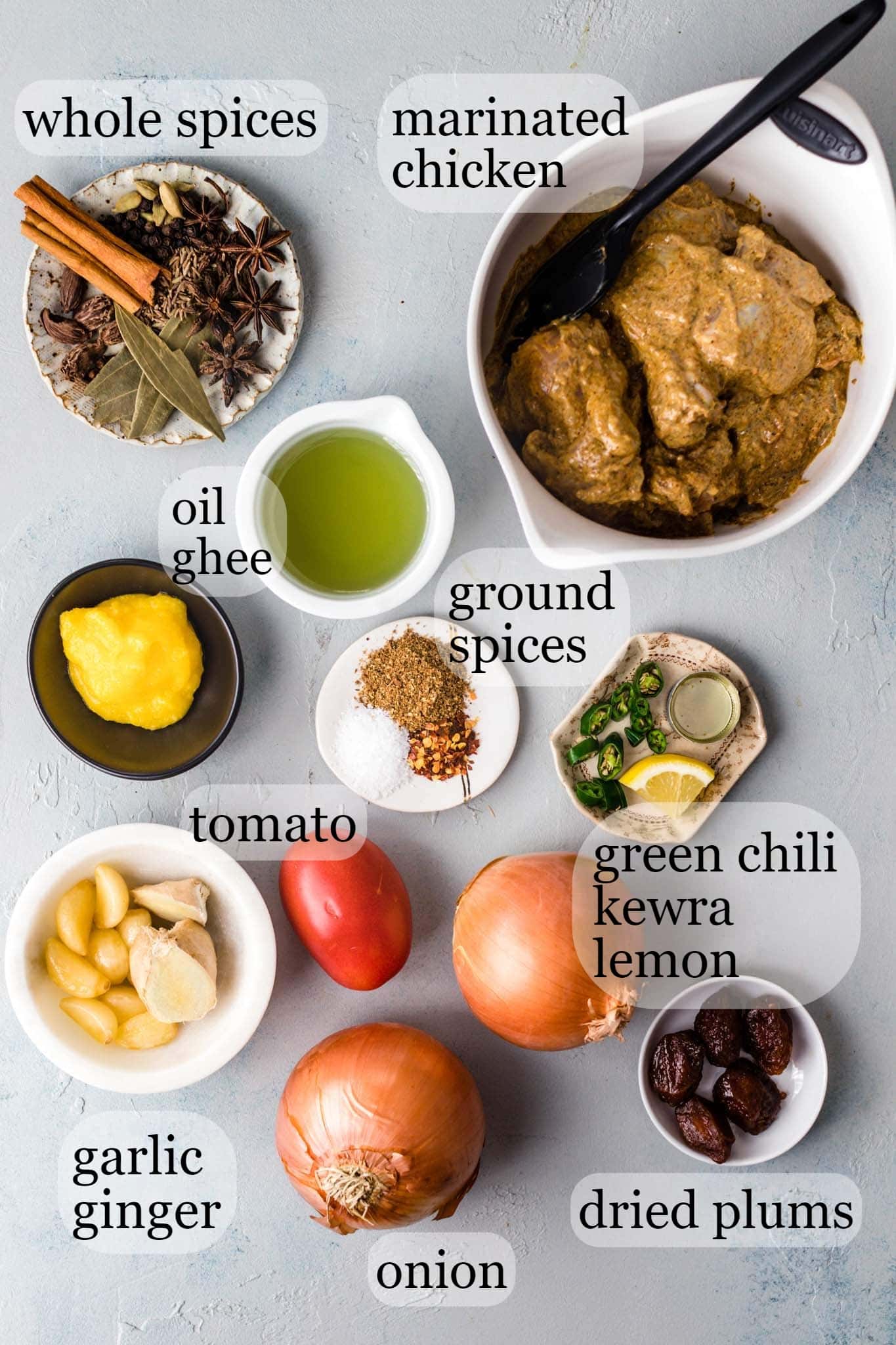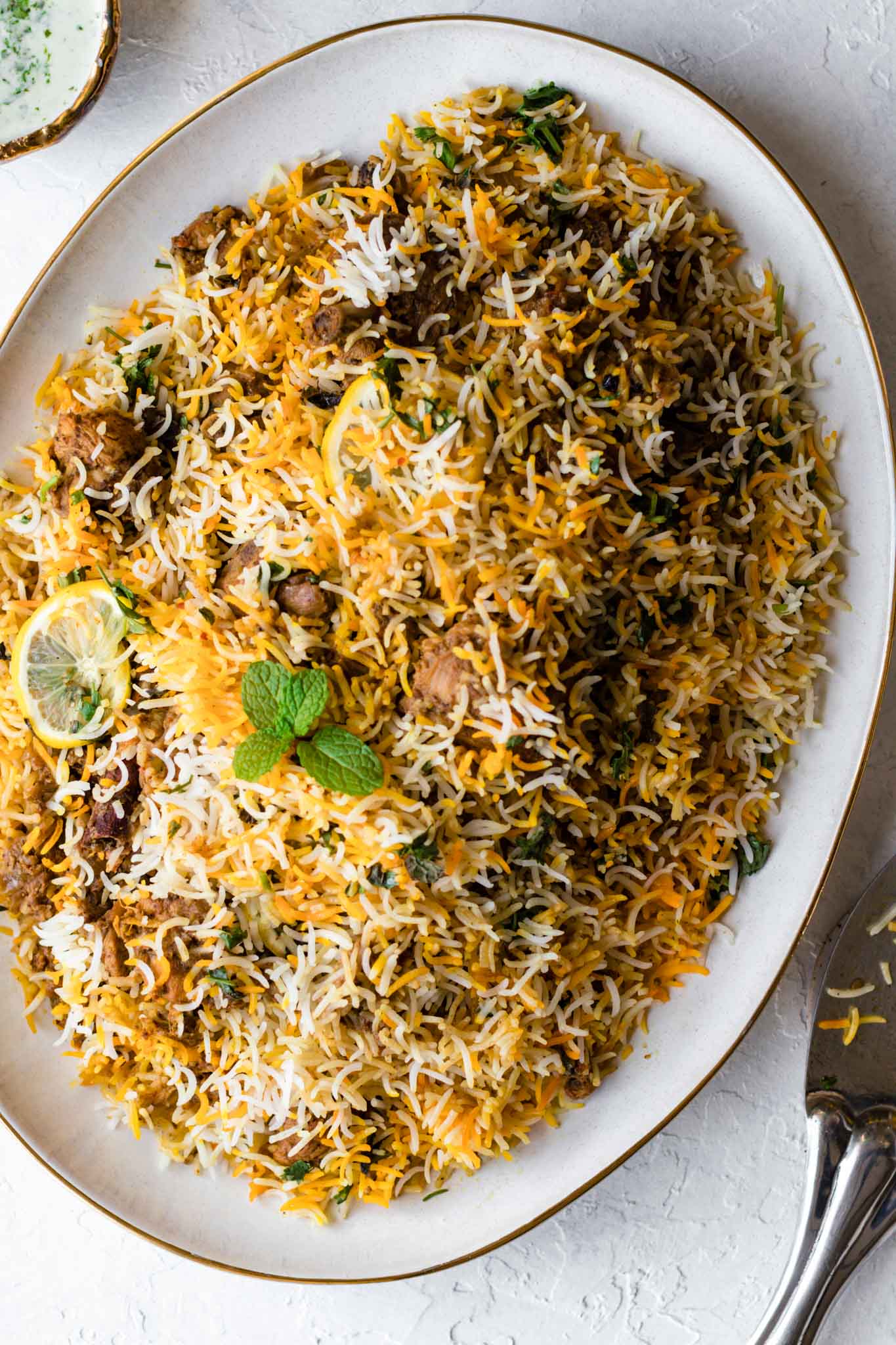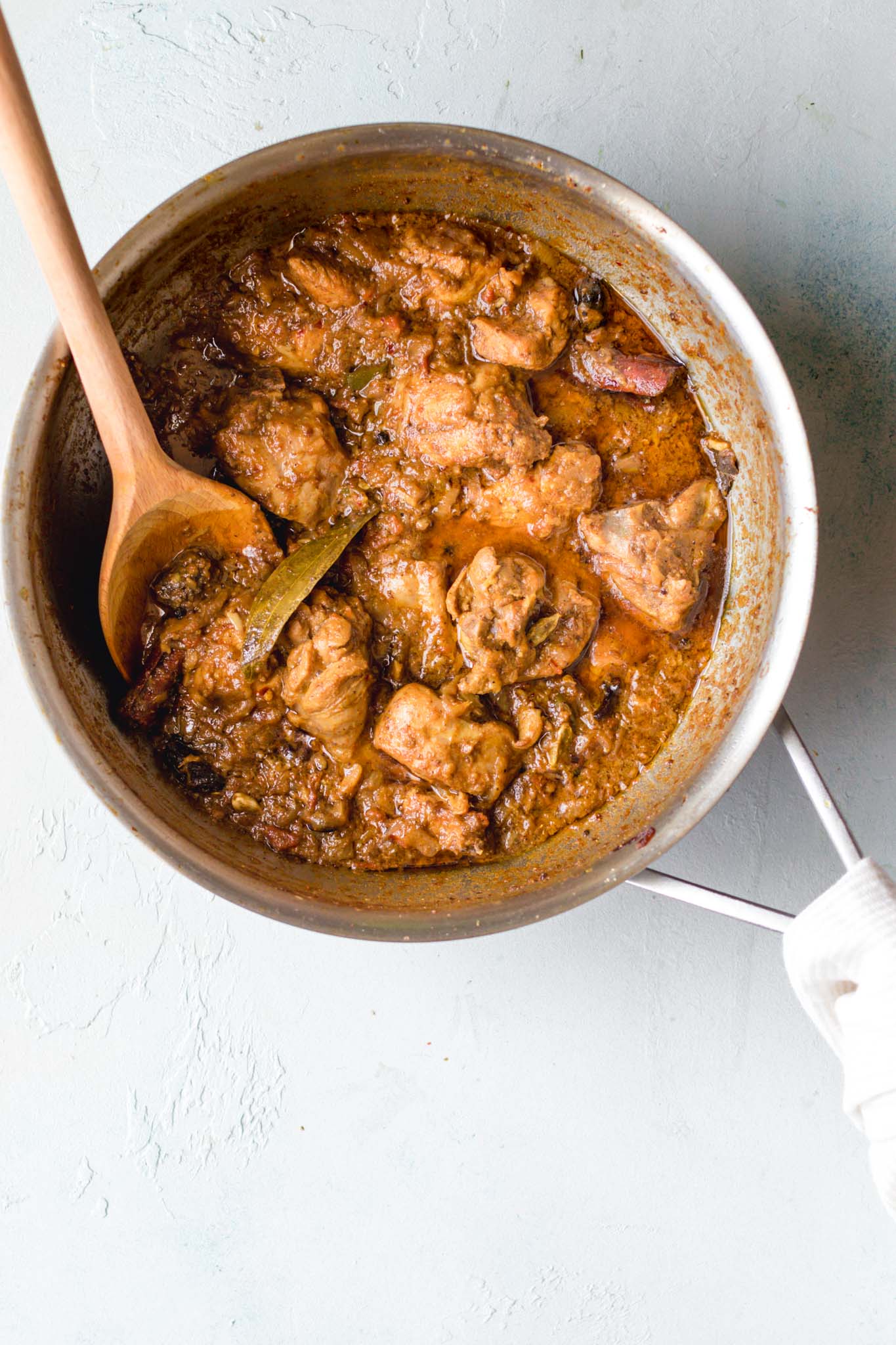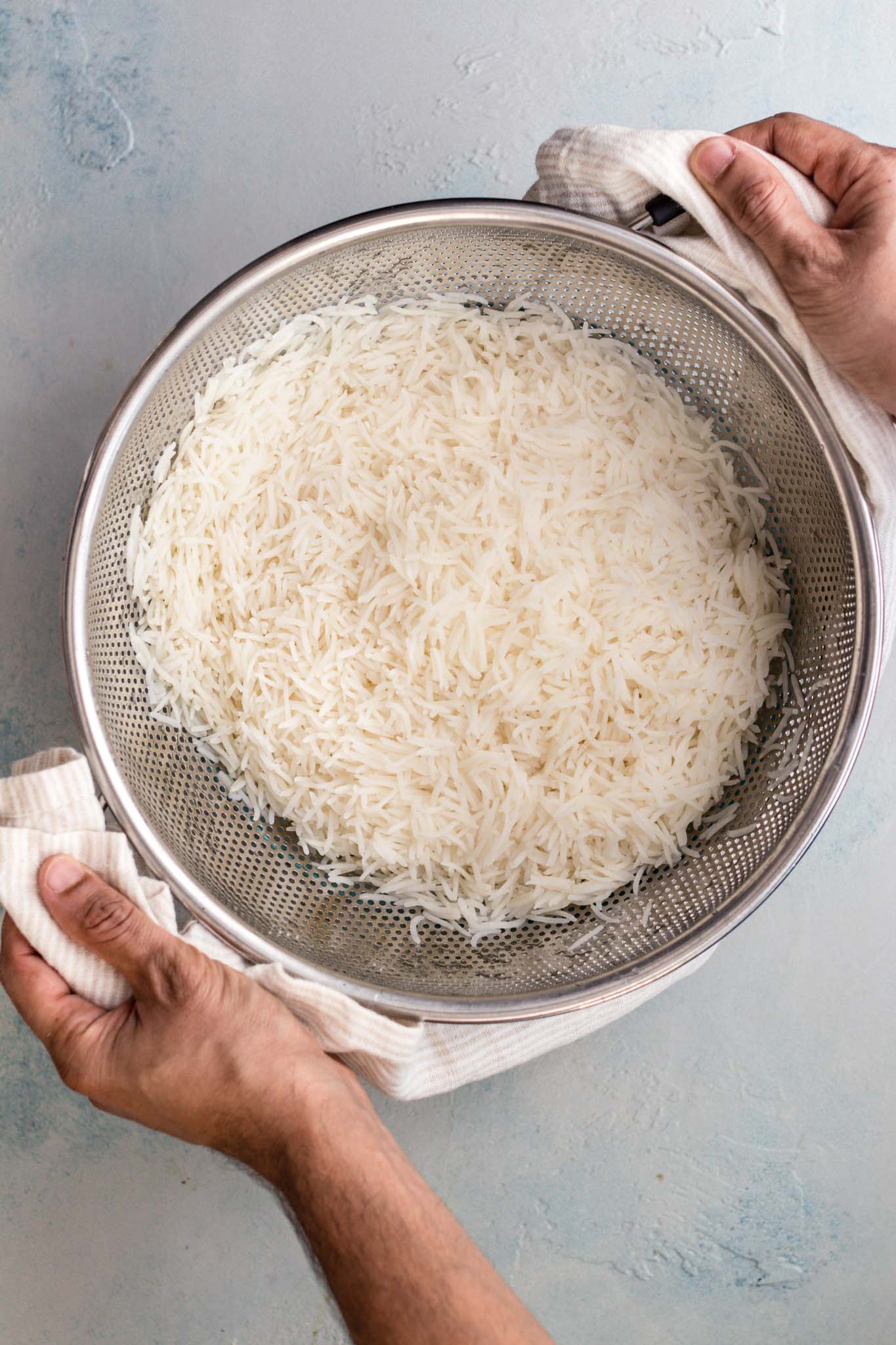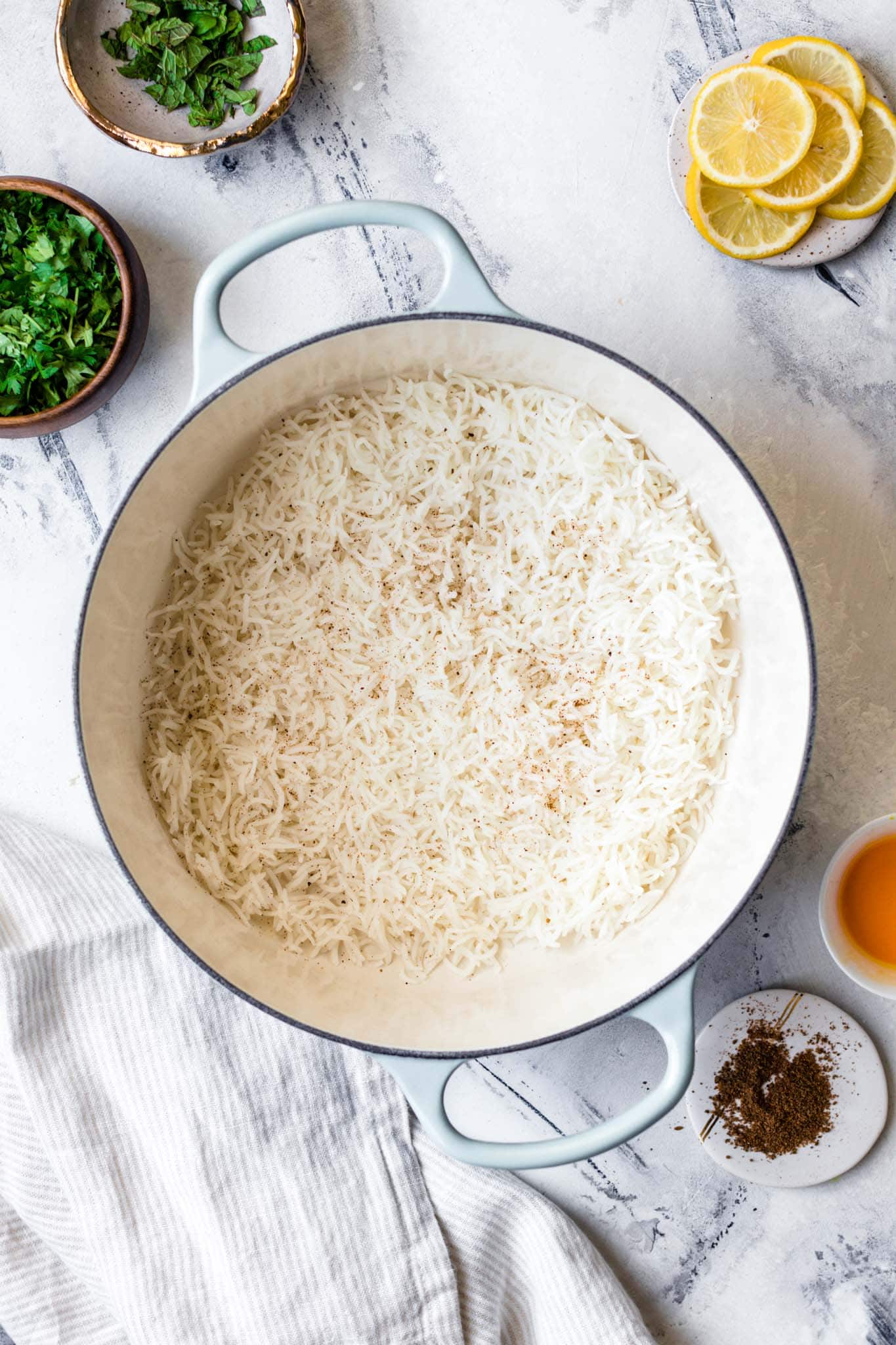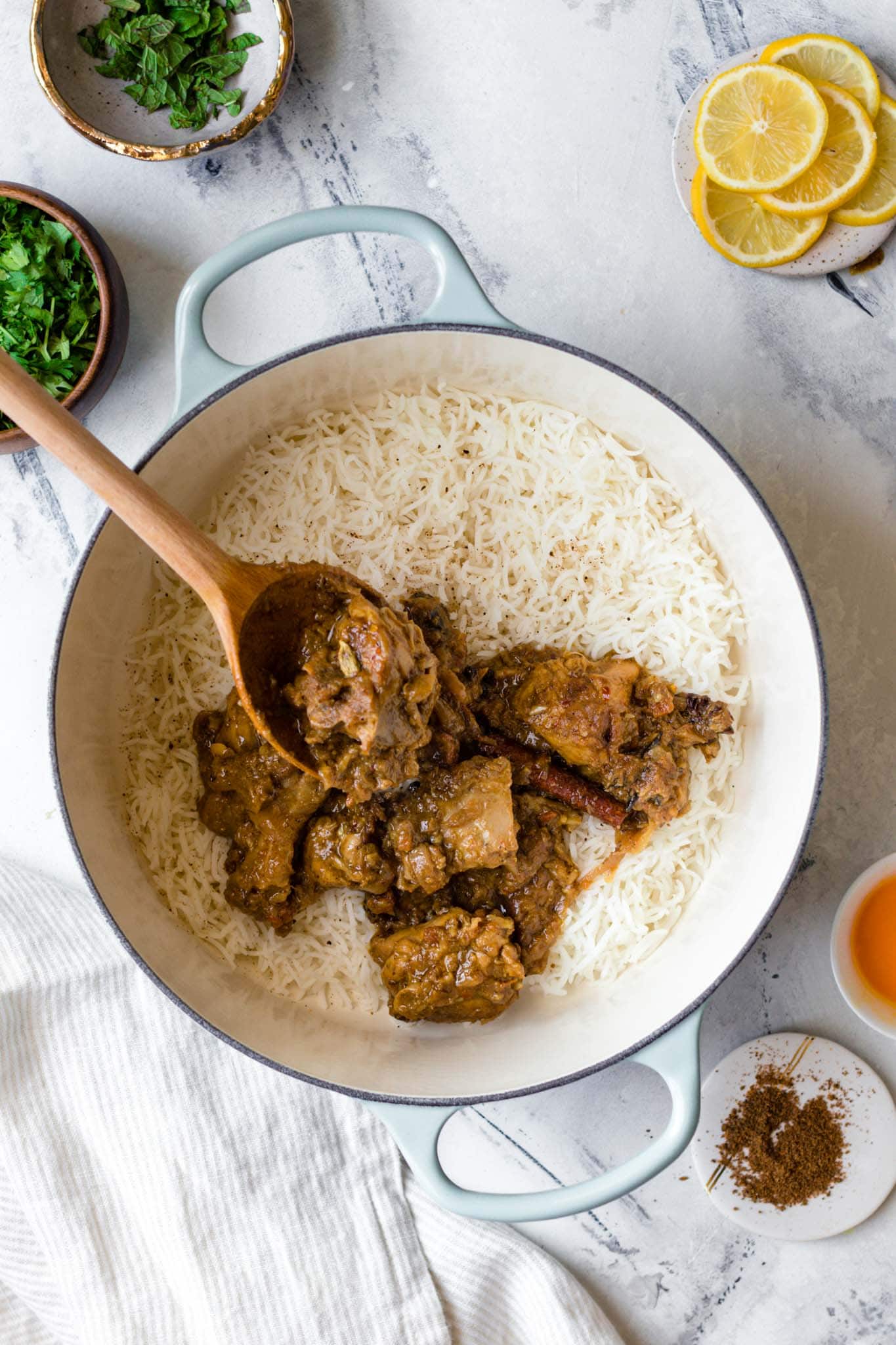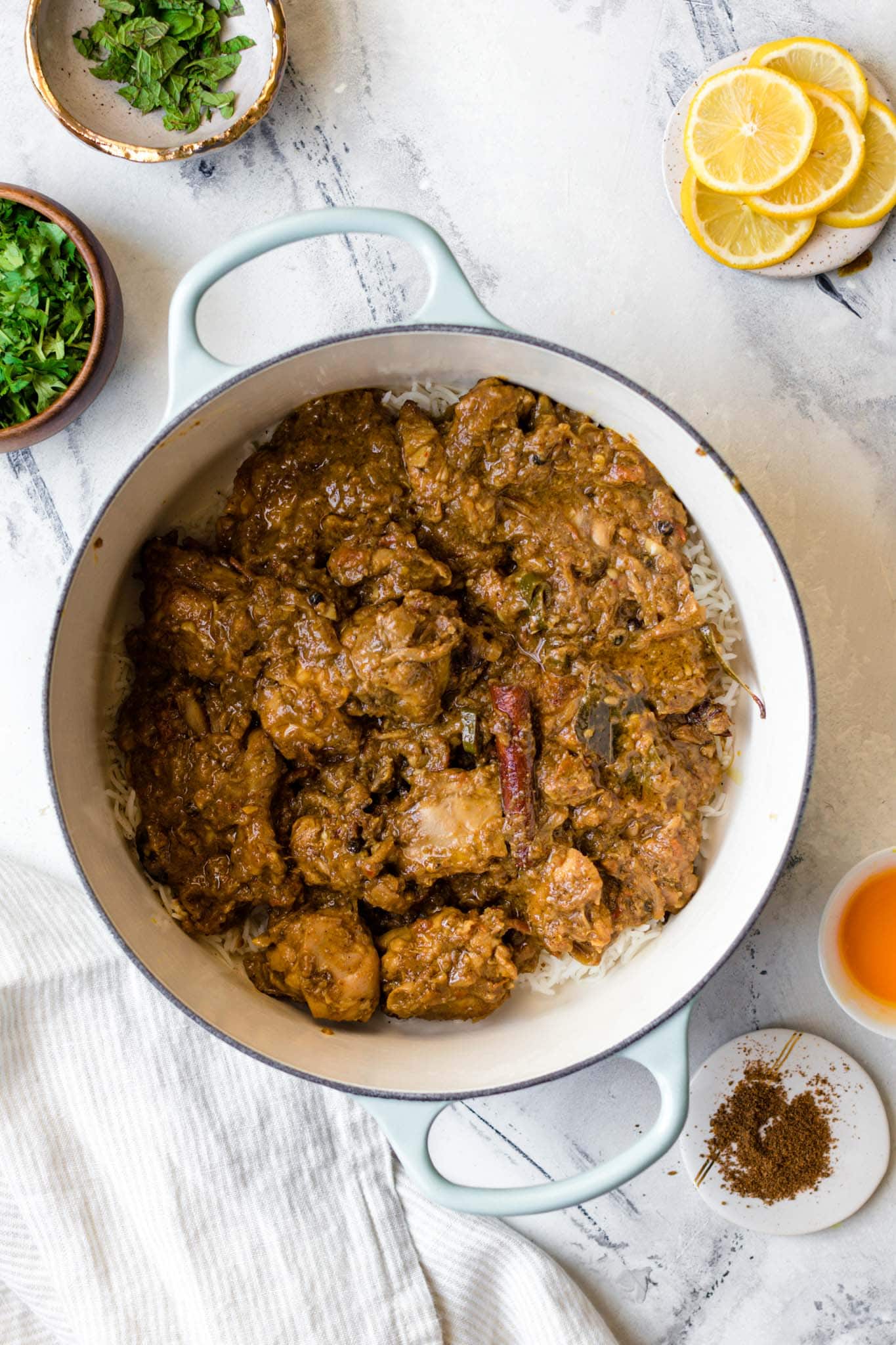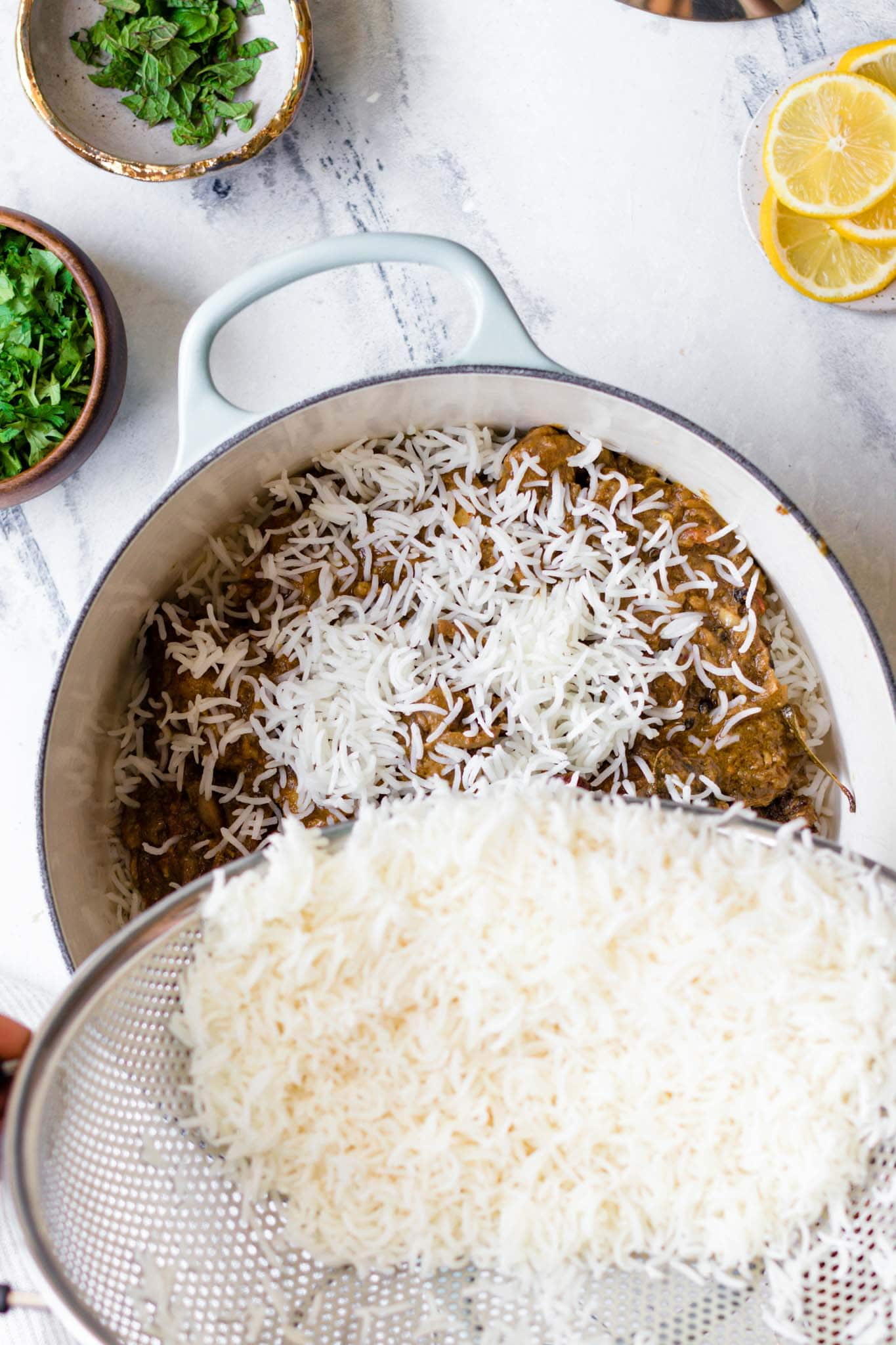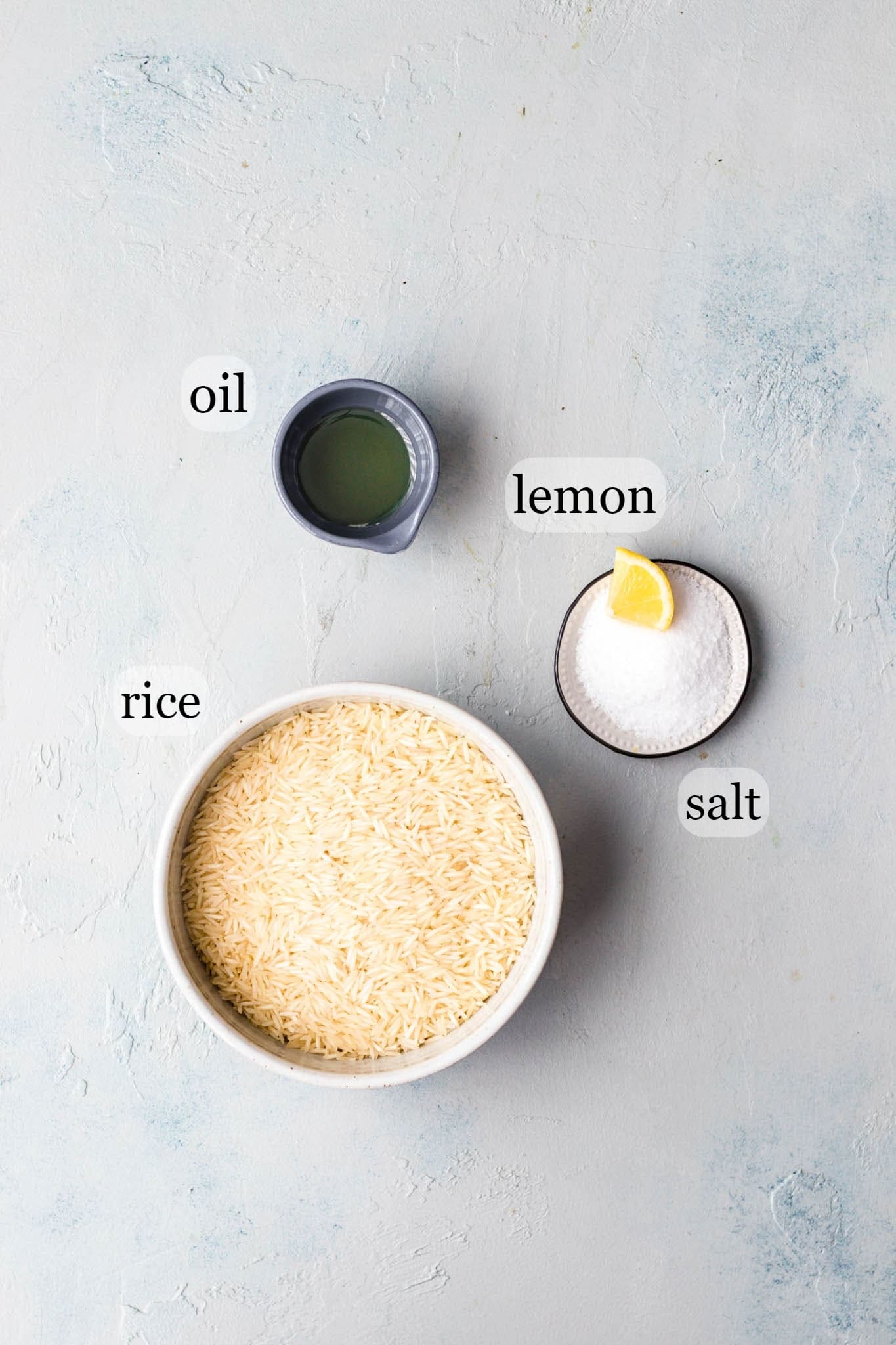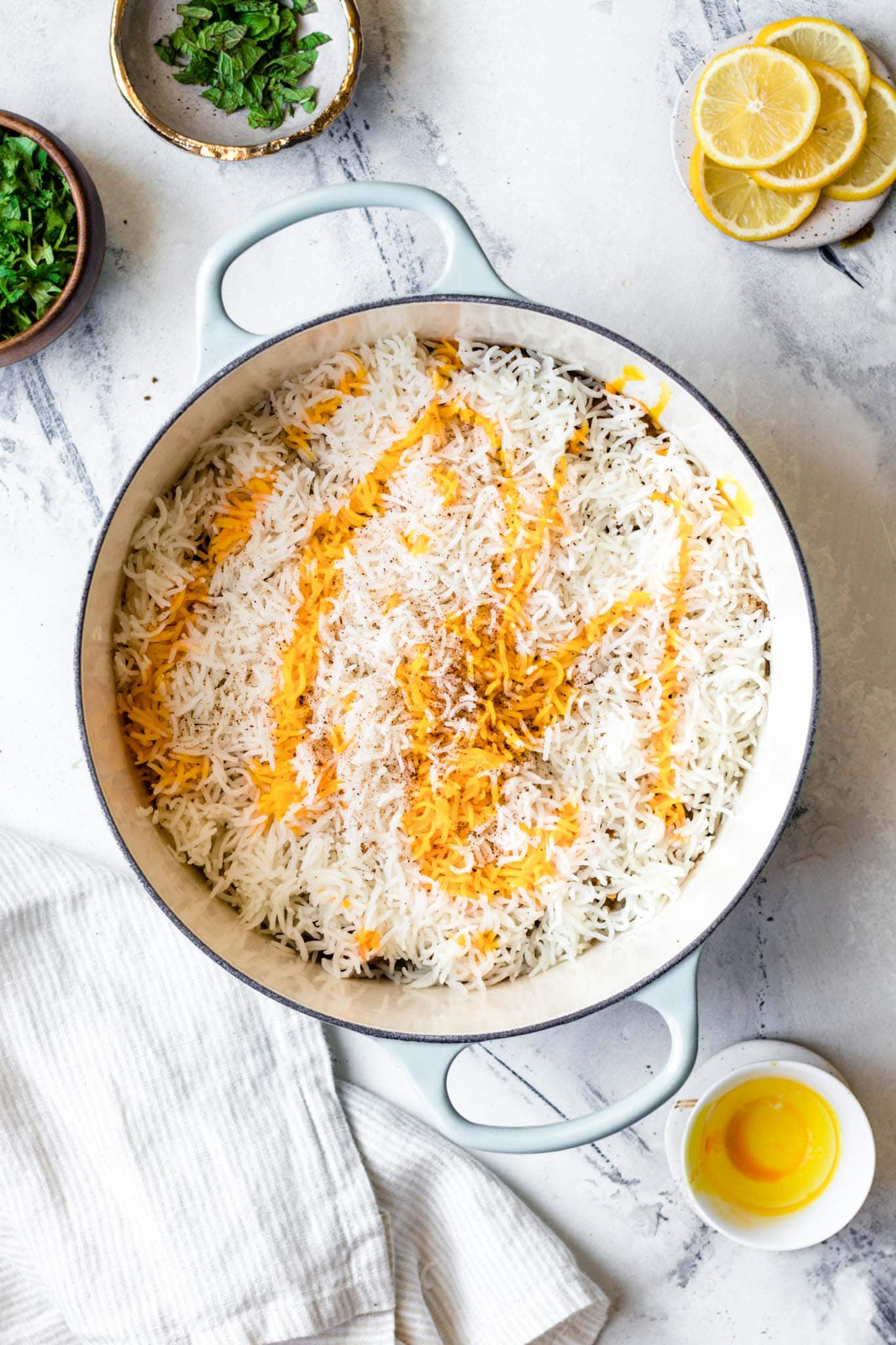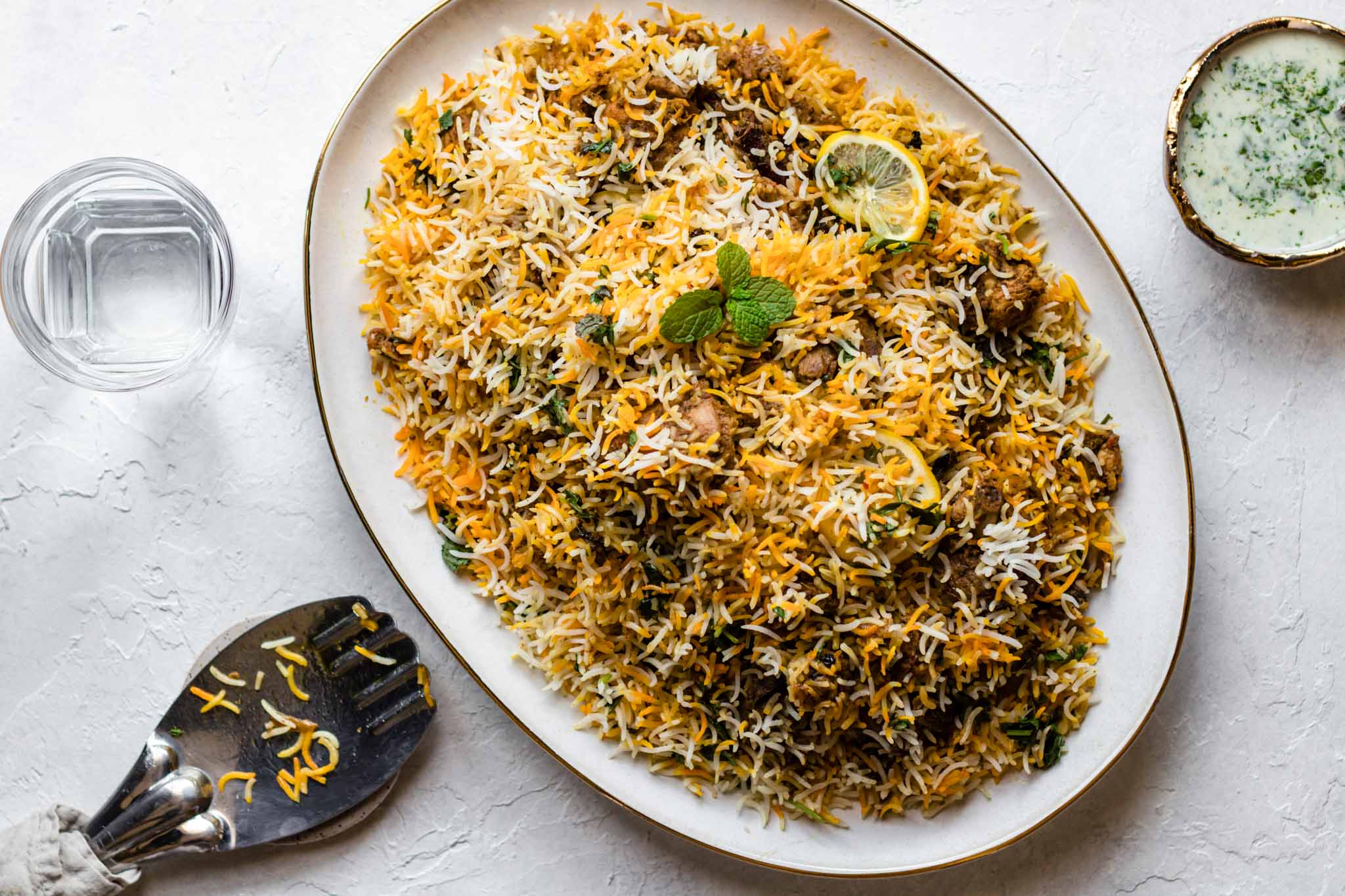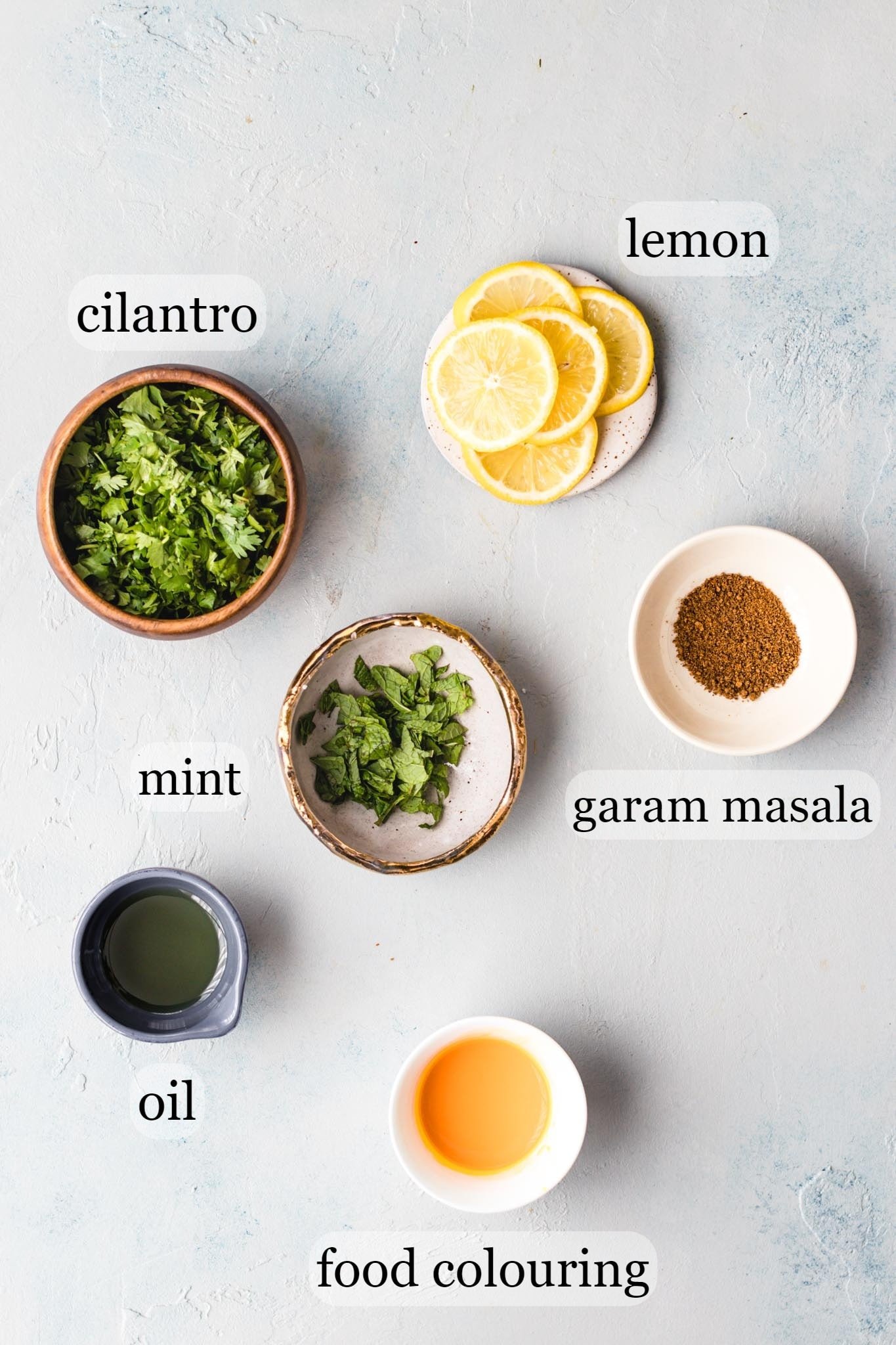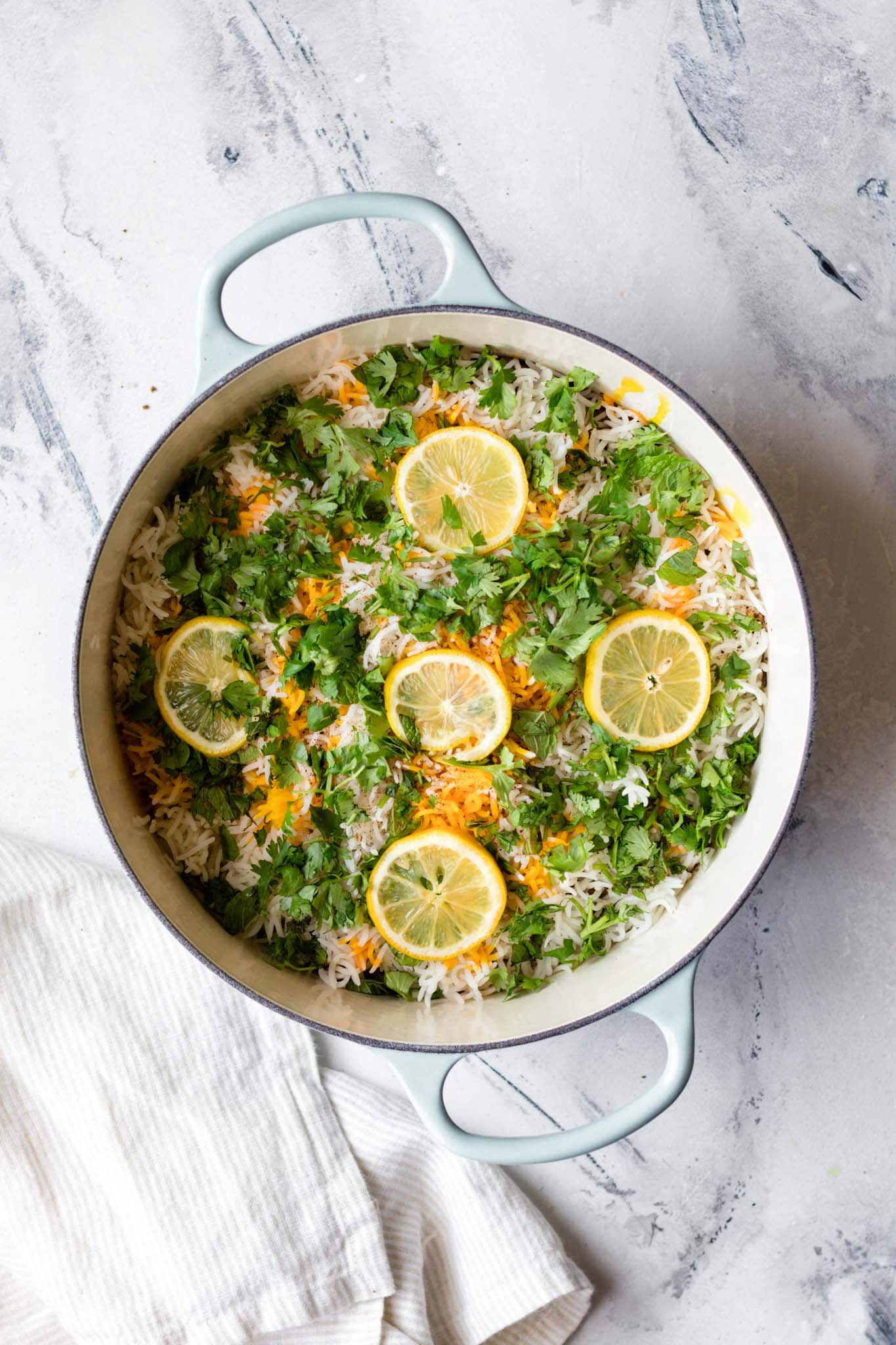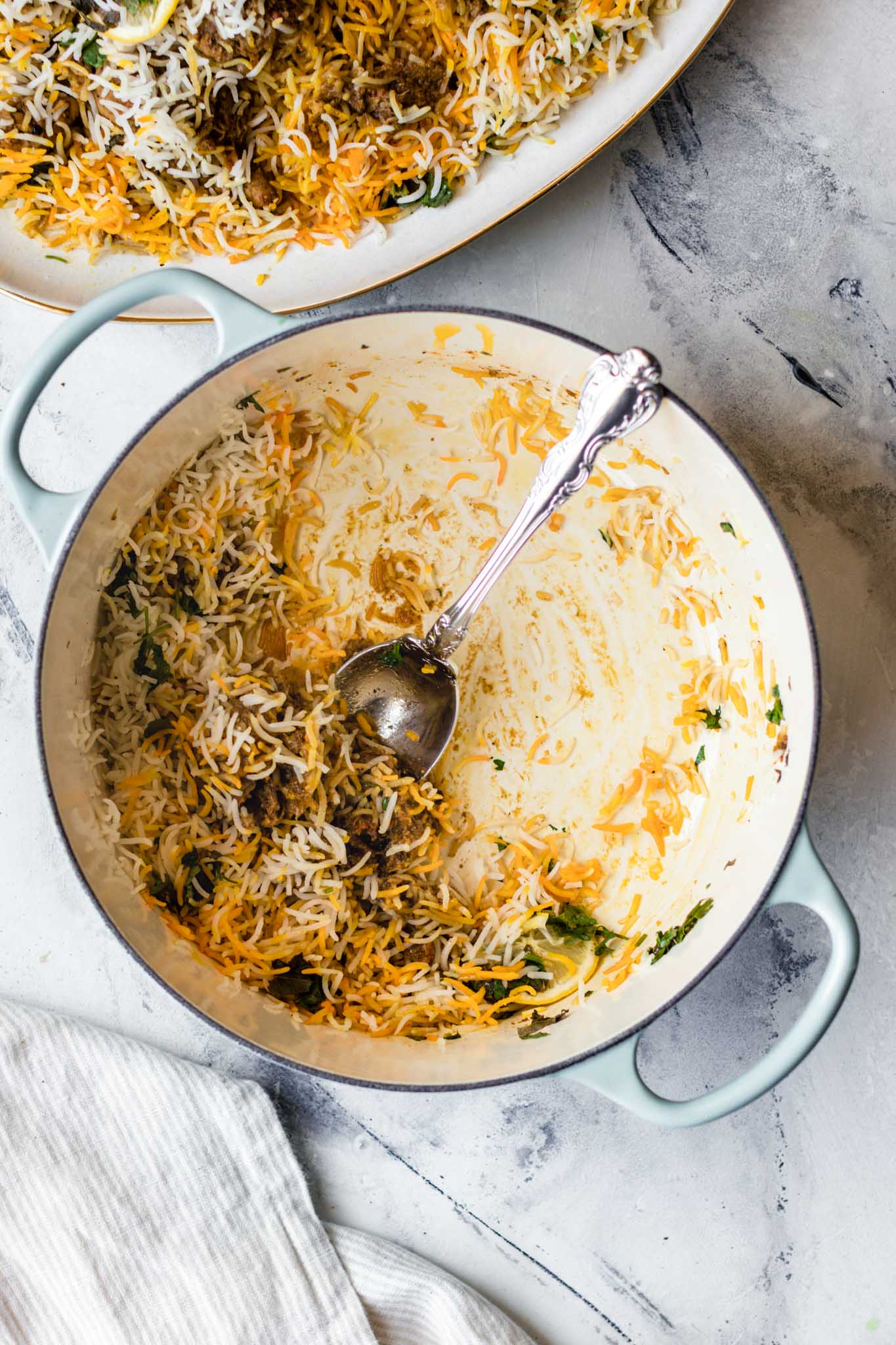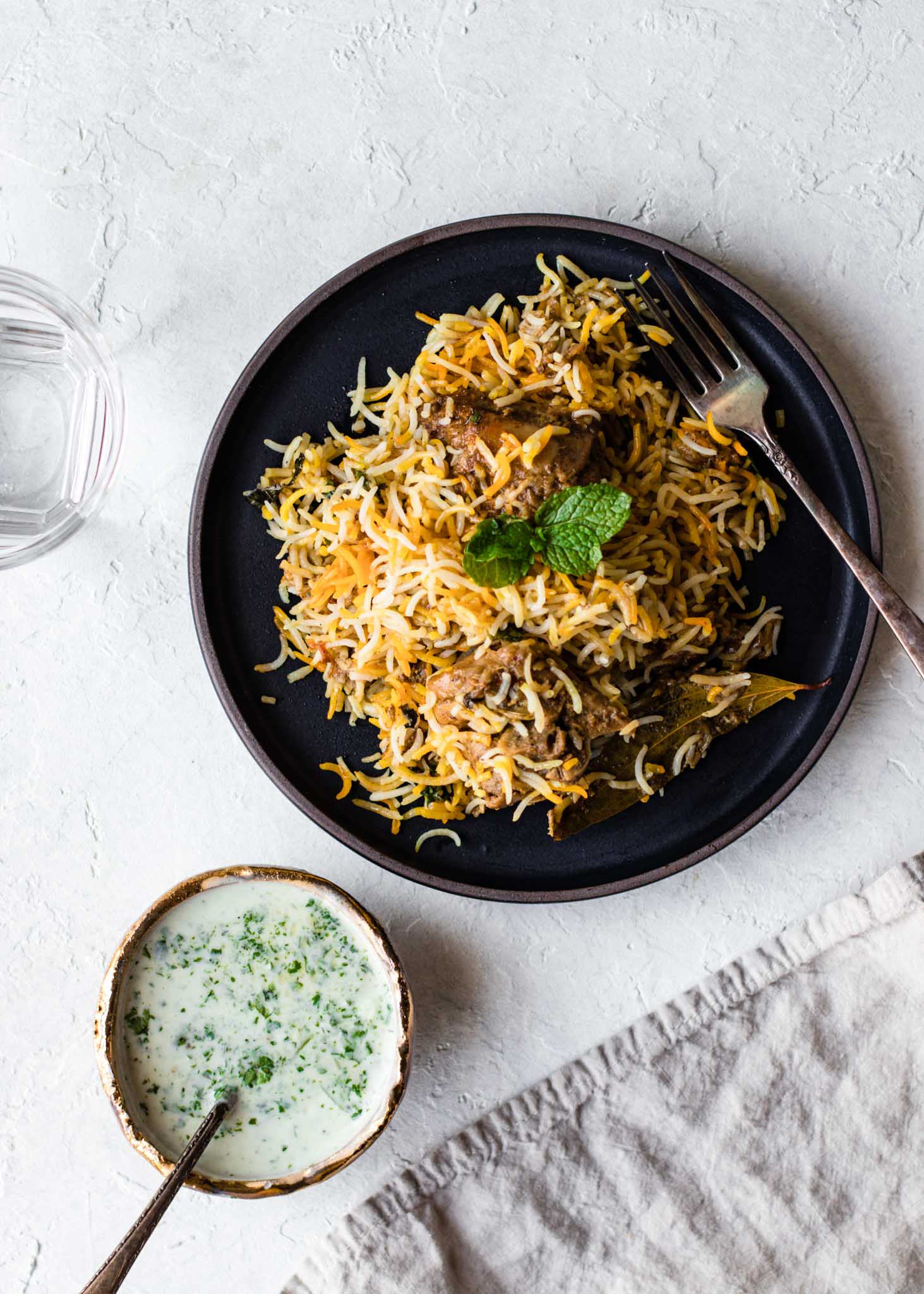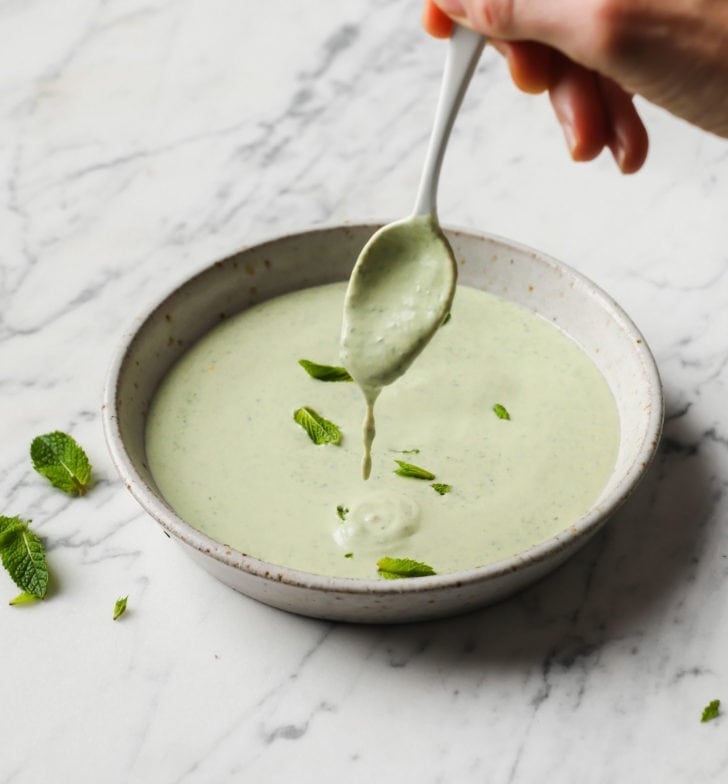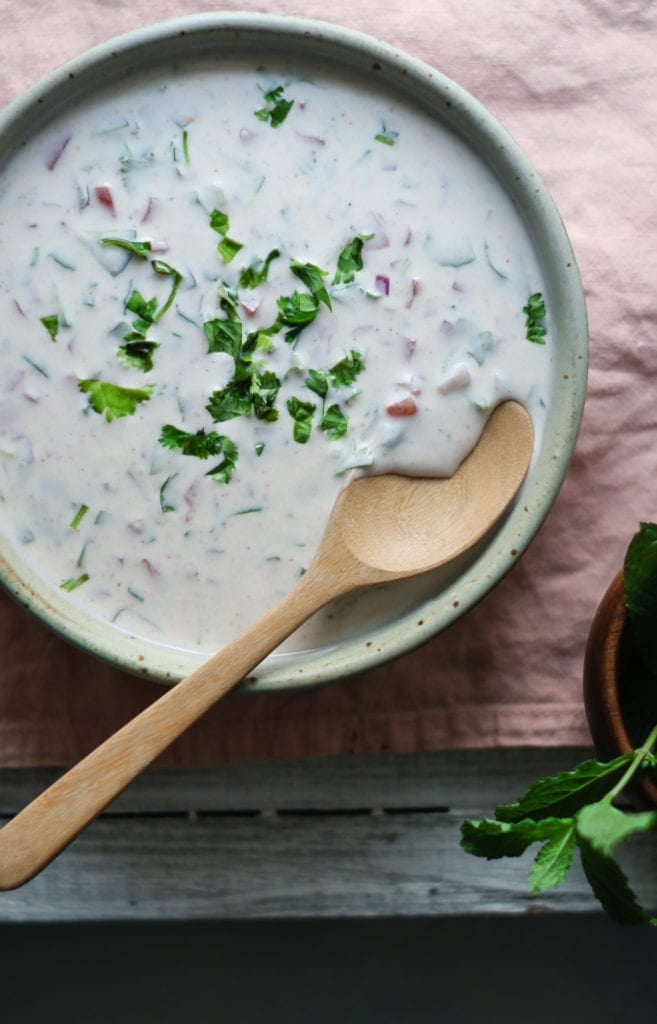It took me absolutely no effort to bring you this biryani recipe. All I had to do was find the best biryani in Houston, dissect it, hound poor Rizwan for details, perform 10+ trials, use the concepts in Salt Acid Fat Heat to further perfect it, survey my email list for preferences, interpolate to figure out spice quantities, and you know…cry a little. Enter your email below and get it sent straight to your inbox. Plus, get recipes & tips every week! In short, I literally ate, slept, and breathed biryani until I could proudly publish this most-beloved, highly requested recipe and do it justice. Phew. Let’s do this. More Famous Chicken Recipes: Butter Chicken, Chicken Jalfrezi, and Chicken Karahi
What is Biryani?
Biryani is an intricate rice dish made with layers of curried meat and rice. Given its use of adornments and luxurious finishes, it’s no surprise that biryani has roots in Persian cuisine. There are two main methods of making biryani:
Kachi (raw) biryani, made with raw meat and parboiled rice and cooked together, and Pakki (cooked) biryani, in which cooked meat and parboiled rice are steamed together.
In Pakistan, pakki (or cooked) biryani is most common, with several prominent varieties such as Sindhi, Karachi-style, and Bombay biryani. This recipe is an amalgamation of these styles and is similar to what you’d find at a typical Pakistani or Indian restaurant or dinner party.
How to make the chicken tender and flavorful
There are 3 components that make the chicken tender and deeply flavored:
Oil/Ghee: I’ve used oil for fluidity and ghee for taste. Onions: You can either thinly slice them (more traditional) or finely chop. If using a food processor to do this, pulse to chop so that it doesn’t blend into a paste. Bone-in, cut up, skinless chicken: I buy pre-cut up pieces of a whole chicken, but bone-in, skinless chicken thighs work too. Whole spices: A generous amount of whole spices are a distinct characteristic of biryani. Of course, whole spices are meant to be discarded while eating. If you find them too much, you can always reduce the amount or place them in a spice/muslin bag. Garlic + Ginger: I use a mortar and pestle or a food processor to crush them. Tomatoes: Since biryani has lots of sour ingredients like yogurt, dried plums (alu Bukhara), and lemon, I’ve found keeping the tomatoes to a minimum gives it just the right amount of tang. Yogurt: Not only does a yogurt marinade make the chicken more tender and flavorful, but it also makes cooking the chicken much smoother. For a dairy-free option, try using coconut milk. Rice: I suggest using aged, long-grain basmati rice you can find at some grocery stores, any Indian/Pakistani specialty store, or online. Dried Plums (Alu Bukhara): I always go for the helping of biryani with these sweet surprises. Alu Bukhara are often used in biryani to give a sweet, tangy taste. They’re usually available at South Asian grocery stores, but if you can’t find them, you can either substitute with dried prunes or omit.
I recommend you use the biryani masala recipe below (all you need is a good spice grinder and a few extra whole spices). If you’d prefer not to, you can substitute your favorite store-bought biryani masala. This recipe has been tested and works great with Bombay Biryani Masala. To make Biryani masala for this recipe, combine the following ingredients in a spice grinder and process until mostly smooth. Makes ~2 tbsp, which is the exact quantity you’ll need for this recipe.
1 medium dried bay leaf (tez patta) 2 dried button red chili peppers (sukhi lal mirch) 1 small whole mace (javetri) 1 2-inch cinnamon stick (daarchini) 4-5 whole cloves (loung) 1 black cardamom (badi elaichi) 1 star anise (baadiyan) 3-4 green cardamom pods (elaichi) 1 tsp roasted cumin seeds or black cumin seeds (shahzeera) 1/2 tsp black peppercorns (kaali mirch) 1/4 tsp fennel (saunf) 1/4 tsp carom seeds (ajwain)
Note: You don’t have to have every single one of these spices to make a wonderful biryani. Don’t worry if you’re missing some – it’ll still give your biryani exceptional flavor!
How to parboil the rice to ensure fluffy rice in Biryani
Identifying doneness can be confusing, so I’ve simplified it by giving time parameters to take the guesswork out of boiling. If you’re using the recommended aged, long-grain basmati rice, you’ll need to boil for 5 minutes. If you’re using newly harvested basmati rice often found in American grocery stores, it’ll require a shorter boiling time (around 4 minutes). For reference, here’s how my rice acts minute-to-minute:
At 3 minutes, the rice still has a raw center. At 4 minutes, the center has mostly cooked, but the rice kernel is still tough. Around 5 minutes, the rice starts to swell and the rice is just-cooked. In between 5 minutes and 5:30 seconds is when it’s ideal to stop boiling the rice. At 6 minutes, the rice is cooked, but starts to break easily without getting mushy. In between 7-8 minutes, the rice gets mushy once pressed between your fingers. This is a sign that it’s overcooked and is more likely to break during the ‘dum’ stage.
Tip: Drain the rice promptly so the hot water doesn’t continue cooking the rice. Also note that a little overcooked or undercooked rice is not going to ruin your biryani.
Here’s how to fix overcooked or undercooked rice:
If you overcook your rice:-Lay the just-boiled rice on a flat tray immediately after boiling to ensure it doesn’t clump together.-Steam (dum) for a shorter time to avoid breakage. If you undercook your rice:-Sprinkle ¼ cup of water on top of the rice during the steam.-When covering the pot for steaming, use a damp kitchen cloth instead of dry to give extra moisture.
More tips to avoid mushy rice
What is the perfect rice to meat ratio for Biryani?
Determining the right ratio of rice to meat can be tricky. I figured the best way to break this down is with this table: Note that these are my preferred ratios. Feel free to increase the rice by 1/4 cup if you prefer more rice and less chicken.
How to get the authentic flavor of biryani
A whooping 52% of my email community found getting the taste right to be the most difficult part of making biryani. Here’s what I’ve found:
Steaming (‘Dum’) for Chicken biryani
I’ve found Rizwan’s statement to be true. When steam permeates through the rice, spices, herbs, and chicken, it infuses the biryani with so much flavor that each bite is a treat.
What Pot to Use for Steaming/Dum
Though you can use any pot or pan you’d like to prepare the chicken and parboil the rice, a Dutch oven or deep pot (at least 5 qt) will be helpful for the steaming (‘dum’) stage. Unless you’re making larger quantities, don’t worry about buying a special pot for biryani. I’ve tried using a cheap dutch oven with a tava underneath and a cast iron dutch oven and both worked well. Here are a few tips:
Steaming the Biryani in the Oven
(Update: 8/29/24) I’ve often been asked how to steam biryani in the oven. I prefer a longer steam at lower heat to a shorter steam at higher heat. To steam in the oven: If you’re in a rush, you can steam at 300°F-320°F (150°C-160°C) for 30 minutes.
Layering the Chicken Biryani
I’ve kept the layering simple, but you can make it as festive as you’d like by adding sliced tomatoes, store-bought/homemade fried onions, or green chili peppers in between or on top of the chicken and rice.
Modifications
How to Double the Recipe
I’ve tested this recipe several times with double the quantity. Here’s what’ll change:
Increase sauté times. Use larger pans (8-10 qt), especially for steaming. When adding water to cook the chicken (Step 4), instead of doubling and adding 1 full cup, only add 3/4 cup of water. The water should cover about 1/3 of the chicken. This makes it easier to sauté out the water after cooking the chicken.
Tip: To double the recipe within the recipe card, hover to top right of the ingredients and adjust the recipe by clicking 2x. This will adjust the all the ingredient quantities for you.
How to make this Biryani with Potatoes
Potatoes in biryani are a point of contention, with responses ranging from “Is it even biryani if it doesn’t have potatoes?” to “With potatoes, it’s pulao.” Since I don’t have a strong preference, I thought it’s best for me to explain how to add them and then leave it up to you.
To add potatoes to this recipe, peel and cube 2 small Russet potatoes and either 1) add them along with the tomatoes in Step 4 OR 2) fry and cook them separately, then layer them in with the chicken or underneath the rice during the steaming/dum.
Alternative Meats and Cuts
What to Serve with Biryani
Biryani is a stand-alone dish, and a simple or Vegetable Raita or Mint Raita will be enough alongside it. Kachumber Salad or fresh, crunchy vegetables such as sliced onions, carrots, or cucumbers will add crunch and texture. If you’re serving it for guests, kebabs like Aloo Tikki (Potato Cakes), Chapli Kabab, or Shami Kebab would pair well. Tried this recipe? If you have a minute, please consider leaving a comment telling me how it was! You can also take a quick picture and upload it directly into the comments. If you’re on Instagram, please tag me so I can see your creations. I truly love hearing from you. Thank you!
